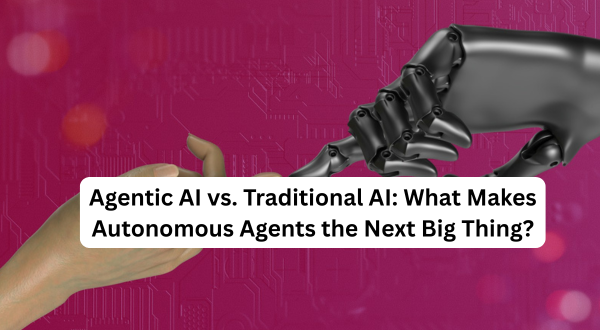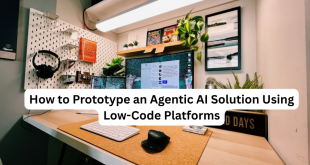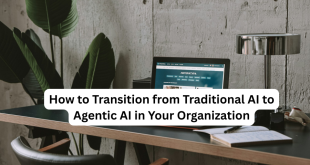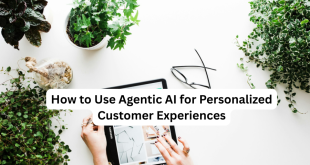In the rapidly evolving world of artificial intelligence, a new paradigm is emerging that promises to redefine how we interact with technology: Agentic AI. Unlike traditional AI systems, which excel at specific tasks like image recognition or language processing, Agentic AI introduces a level of autonomy and decision-making that feels almost human-like. But what exactly sets Agentic AI apart from its predecessors, and why is it being hailed as the next big thing? Let’s dive into the differences, capabilities, and transformative potential of autonomous AI agents.
Understanding Traditional AI
Traditional AI, often referred to as narrow AI, is designed to perform specific, well-defined tasks. Think of virtual assistants like Siri, recommendation algorithms on Netflix, or chatbots handling customer inquiries. These systems rely on predefined rules, machine learning models, or neural networks to process data and deliver results. Their strengths lie in:
- Specialization: Traditional AI excels at tasks like pattern recognition (e.g., facial recognition) or predictive analytics (e.g., sales forecasting).
- Data-Driven Outputs: It processes large datasets to generate insights, translations, or classifications.
- Human Oversight: These systems typically require human intervention to set parameters, interpret results, or handle exceptions.
However, traditional AI has limitations. It’s reactive, meaning it responds to inputs rather than proactively making decisions. It struggles with complex, dynamic environments where goals evolve or unexpected variables arise. For example, a traditional AI chatbot might answer FAQs but falter when faced with an ambiguous customer request requiring contextual judgment.
Enter Agentic AI: The Autonomous Revolution
Agentic AI, sometimes called autonomous AI or AI agents, takes intelligence to the next level by acting independently to achieve goals. These systems don’t just process data—they plan, reason, and execute tasks with minimal human input. Gartner predicts that by 2028, 15% of daily work decisions will be made autonomously by such agents, transforming industries. Here’s what makes Agentic AI unique:
- Goal-Oriented Autonomy: Agentic AI is designed to pursue objectives. For instance, an AI agent in logistics might optimize delivery routes in real time, adjusting for traffic, weather, or fuel costs without human prompts.
- Contextual Adaptability: Unlike traditional AI’s rigid frameworks, AI agents can navigate ambiguity. They learn from their environment, adjust strategies, and handle unforeseen challenges.
- Proactive Decision-Making: Agentic AI doesn’t wait for instructions. It can initiate actions, such as an AI in healthcare scheduling follow-up tests based on a patient’s evolving condition.
- Integration with Ecosystems: These agents often work with other technologies, like IoT or edge computing, to make real-time decisions in complex systems (e.g., smart cities managing energy grids).
A practical example? Imagine an Agentic AI managing a warehouse. While a traditional AI might analyze inventory levels, the AI agent could autonomously reorder stock, negotiate with suppliers, and optimize storage layouts based on demand forecasts—all while adapting to supply chain disruptions.
Key Differences: Agentic AI vs. Traditional AI
To understand why Agentic AI is a game-changer, let’s break down the core distinctions:
| Aspect | Traditional AI | Agentic AI |
| Purpose | Task-specific (e.g., classify images) | Goal-driven (e.g., optimize a process) |
| Autonomy | Limited; requires human input | High; acts independently |
| Adaptability | Struggles with dynamic environments | Thrives in complex, changing contexts |
| Decision-Making | Reactive; follows predefined rules | Proactive; reasons and plans |
| Scope | Narrow, siloed applications | Broad, cross-functional integration |
These differences highlight why Agentic AI is poised to disrupt industries. While traditional AI automates tasks, Agentic AI automates decision-making, bridging the gap between human intuition and machine efficiency.
Why Agentic AI is the Next Big Thing
The rise of Agentic AI is fueled by technological advancements and real-world demands. Here’s why it’s capturing attention:
- Scalability Across Industries
From finance (autonomous trading agents) to healthcare (personalized treatment planners), Agentic AI is versatile. In retail, for instance, AI agents can manage inventory, personalize marketing, and predict trends in real time, boosting efficiency and revenue. - Economic Impact
The ability to automate complex workflows could save billions. McKinsey estimates that AI-driven automation, including agentic systems, could add $15.7 trillion to the global economy by 2030. - Handling Complexity
As businesses face increasingly volatile environments—think global supply chains or climate-driven disruptions—Agentic AI’s adaptability makes it indispensable. It can juggle multiple variables, from market shifts to regulatory changes, with ease. - Human-AI Collaboration
Rather than replacing humans, Agentic AI augments them. For example, in creative industries, AI agents could brainstorm campaign ideas, leaving humans to refine the vision. This synergy enhances productivity without sacrificing creativity. - Technological Convergence
Agentic AI thrives on advancements in multimodal AI, edge computing, and 5G. Smaller, efficient models (e.g., Micro LLMs) enable agents to run on devices with limited resources, democratizing access.
Challenges and Considerations
Despite its promise, Agentic AI isn’t without hurdles. Ethical concerns, such as ensuring transparency in decision-making, are critical. If an AI agent denies a loan or reroutes a delivery, how do we audit its reasoning? Bias in training data remains a risk, potentially amplifying unfair outcomes. Security is another concern—autonomous agents could be targets for cyberattacks if not properly safeguarded. Finally, regulatory frameworks are still catching up, with governments grappling to balance innovation with accountability.
The Road Ahead
Agentic AI is more than a buzzword; it’s a paradigm shift that redefines what AI can do. While traditional AI laid the foundation by mastering specific tasks, Agentic AI builds on it by mastering agency. As businesses and governments adopt these autonomous agents, we’re likely to see smarter cities, more efficient industries, and even personalized education systems tailored by AI.
The question isn’t whether Agentic AI will transform our world—it’s how quickly it will happen. By 2025, expect to see AI agents managing everything from your grocery orders to global supply chains, all while adapting to the unpredictable. The future is autonomous, and Agentic AI is leading the charge.
 UBUCH ubuch | Honest Tech Reviews & Tutorials for Everyone
UBUCH ubuch | Honest Tech Reviews & Tutorials for Everyone




